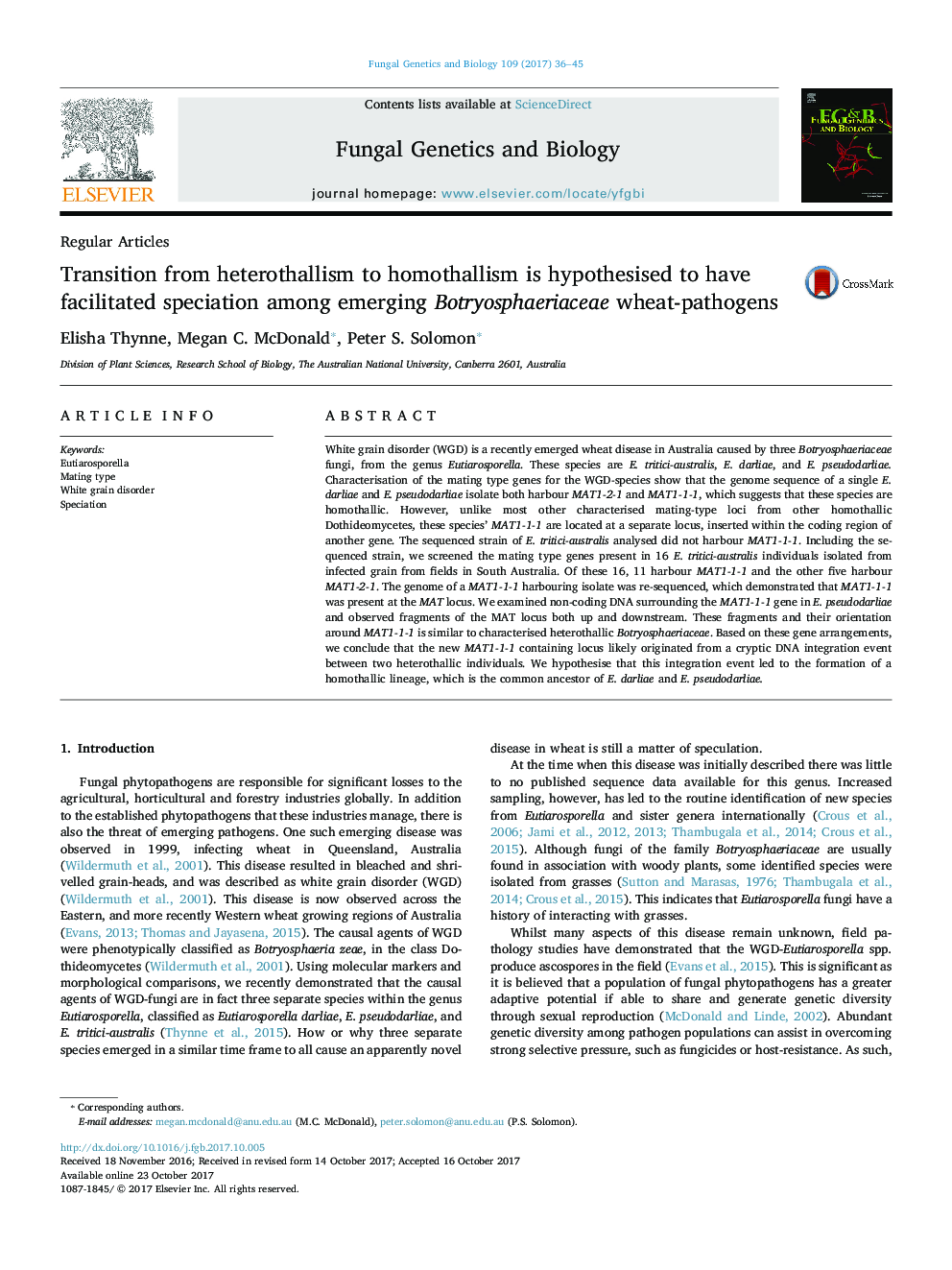| کد مقاله | کد نشریه | سال انتشار | مقاله انگلیسی | نسخه تمام متن |
|---|---|---|---|---|
| 8470473 | 1549982 | 2017 | 10 صفحه PDF | دانلود رایگان |
عنوان انگلیسی مقاله ISI
Transition from heterothallism to homothallism is hypothesised to have facilitated speciation among emerging Botryosphaeriaceae wheat-pathogens
دانلود مقاله + سفارش ترجمه
دانلود مقاله ISI انگلیسی
رایگان برای ایرانیان
کلمات کلیدی
موضوعات مرتبط
علوم زیستی و بیوفناوری
بیوشیمی، ژنتیک و زیست شناسی مولکولی
بیولوژی سلول
پیش نمایش صفحه اول مقاله

چکیده انگلیسی
White grain disorder (WGD) is a recently emerged wheat disease in Australia caused by three Botryosphaeriaceae fungi, from the genus Eutiarosporella. These species are E. tritici-australis, E. darliae, and E. pseudodarliae. Characterisation of the mating type genes for the WGD-species show that the genome sequence of a single E. darliae and E. pseudodarliae isolate both harbour MAT1-2-1 and MAT1-1-1, which suggests that these species are homothallic. However, unlike most other characterised mating-type loci from other homothallic Dothideomycetes, these species' MAT1-1-1 are located at a separate locus, inserted within the coding region of another gene. The sequenced strain of E. tritici-australis analysed did not harbour MAT1-1-1. Including the sequenced strain, we screened the mating type genes present in 16 E. tritici-australis individuals isolated from infected grain from fields in South Australia. Of these 16, 11 harbour MAT1-1-1 and the other five harbour MAT1-2-1. The genome of a MAT1-1-1 harbouring isolate was re-sequenced, which demonstrated that MAT1-1-1 was present at the MAT locus. We examined non-coding DNA surrounding the MAT1-1-1 gene in E. pseudodarliae and observed fragments of the MAT locus both up and downstream. These fragments and their orientation around MAT1-1-1 is similar to characterised heterothallic Botryosphaeriaceae. Based on these gene arrangements, we conclude that the new MAT1-1-1 containing locus likely originated from a cryptic DNA integration event between two heterothallic individuals. We hypothesise that this integration event led to the formation of a homothallic lineage, which is the common ancestor of E. darliae and E. pseudodarliae.
ناشر
Database: Elsevier - ScienceDirect (ساینس دایرکت)
Journal: Fungal Genetics and Biology - Volume 109, December 2017, Pages 36-45
Journal: Fungal Genetics and Biology - Volume 109, December 2017, Pages 36-45
نویسندگان
Elisha Thynne, Megan C. McDonald, Peter S. Solomon,